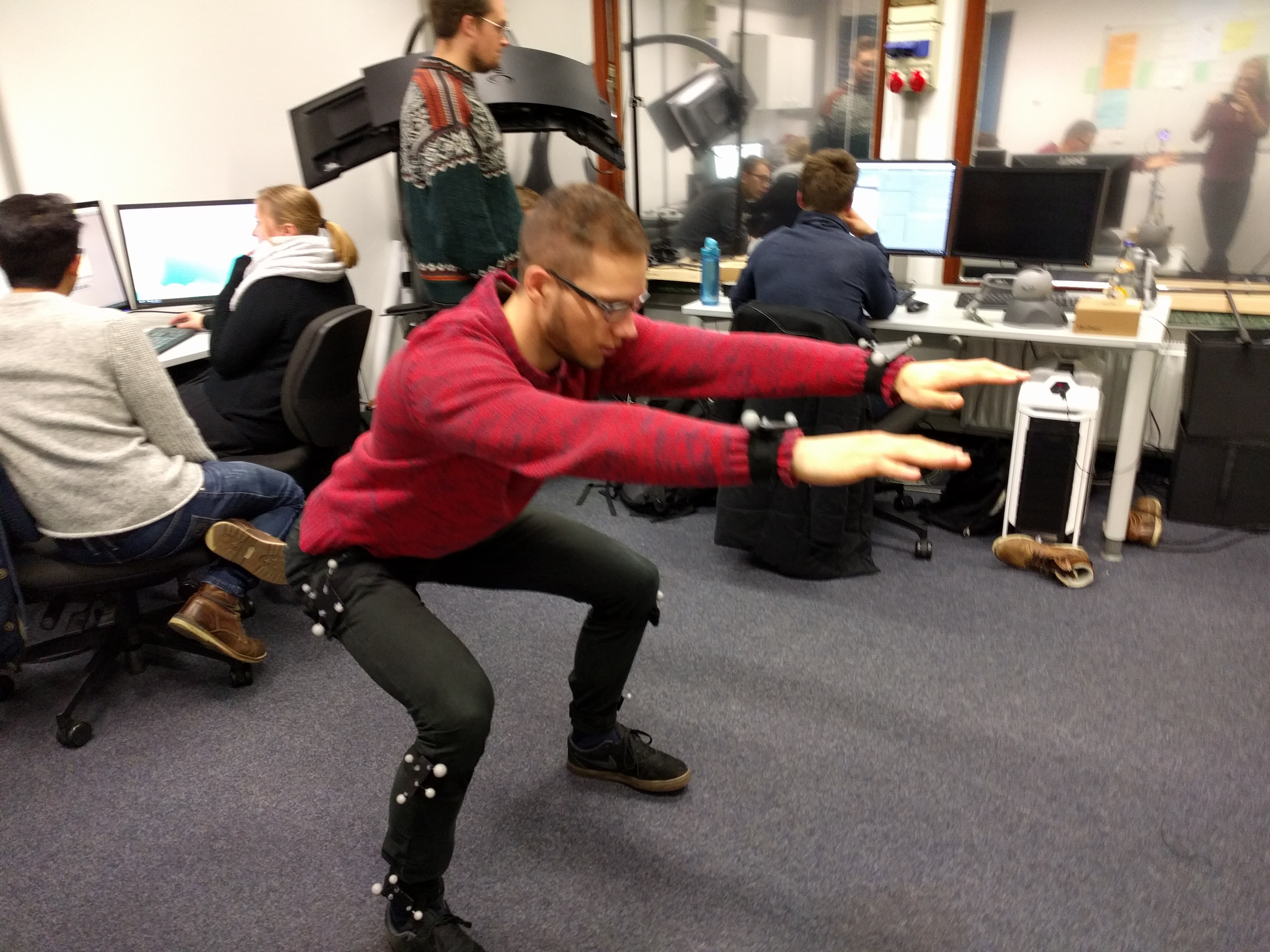VReha
VReha
Project Team
|
Supervision |
Goal
The goal of our Project is to bring physical therapy to more patients in a shorter period of time. This is done by tracking the patients movements using OptiTrack Motion Trackers and giving visual feedback through an HTC Vive headset. The data of these trackers is being interpreted by a Unity powered program that analyzes the form of the patient and gives adequate feedback during his exercise. The patient can follow his movement in a virtual environment using the HTC Vive headset. Within the virtual environment the user can see himself represented as a skeleton in which the tracker positions are marked as spheres. To see if our project performs well enough to be used in a clinical environment, we tested the program during an experiment. The subject hat to perform squats and was either left to their own judgment or got feedback through our program.Approach
To make the experience more memorable than a normal visit to a physical therapist we implemented a training area set in a valley surrounded by mountains and covered with grass. Some pine trees can also be seen. The environment most closely resembles an untouched place in North America or a central European mountain range. At first, the training environment we conceptualized was a standard gym room. But we decided that an unusual place like a beautiful mountain range would motivate patients more.Input was given trough trackers, worn by the subject. Two of these where placed on either hand, both sides of the hips, the knees and the ankles. These fluorescent trackers where picked up by the OptiTrack cameras. After being calibrated, the OptiTrack Motive software computed the positioning based on the location of the trackers and translated them into coordinates used by the Unity engine. Using this data together with the head tracking provided by the HTC Vive as well as inverse kinematics, we where able to mirror the subjects movement in the virtual world and represent them with a basic skeleton.
Using simple mathematics, angles between the ankles and the knee where used to calculate the position of the chins. By using these values we were able to determine if the user was pushing their knees over their toes while performing the squat. Using the positions of the knee trackers at the beginning of the exercise we set a maximum width that the knees needed to be apart. If this distance was undercut, an error was registered. Both error cases could be communicated to the subject through auditive and visual feedback. Knees where colored red as they got closer together or moved too far over the toes. An error sound was emitted whenever an error registered to grab the subjects attention.
The implementation of exercise stages made it possible to give feedback over the amounts of repetitions the subject performed. To do this we divided the squat into five sections. They ranged from standing up, through half squat over bottom squat again to standing up. Each stage was indicated to the subject using a pictogram in the upper right corner of his field of view.

User with trackers attached performing a squat
Evaluation
We conducted a study in which the participants had to perform squats using our application. First, participants had to perform one set of twelve squats without any feedback. On the second run participants performed another twelve squats with the support of the application.We asked each participant to fill out questionnaires before all exercises (Demographic Questionnaire, Simulator Sickness Questionnaire) as well as after the first and second set of squats (Simulator Sickness Questionnaire, Presence Questionnaire). After both sets at the end of the experiment participants where asked to fill out the a post experience questionnaire also regarding their feeling of presence and general well being during the experiment.
In conclusion it can be stated, that the software is not in a workable state. It is more a proof of concept and participants of the study rated it as such. We received rather average scores on all scales. This might be biased because participants wanted to be "nice". The software as a proof of concept works well and we where able to show, that rehabilitation training can be done in a virtual environment. Participants where not overwhelmed by the software and non of the participants experienced simulator sickness which seems to clear the way for more research on the topic.
Repository
Please find this project's repository and Wiki here.
